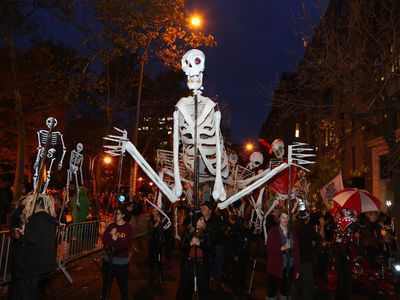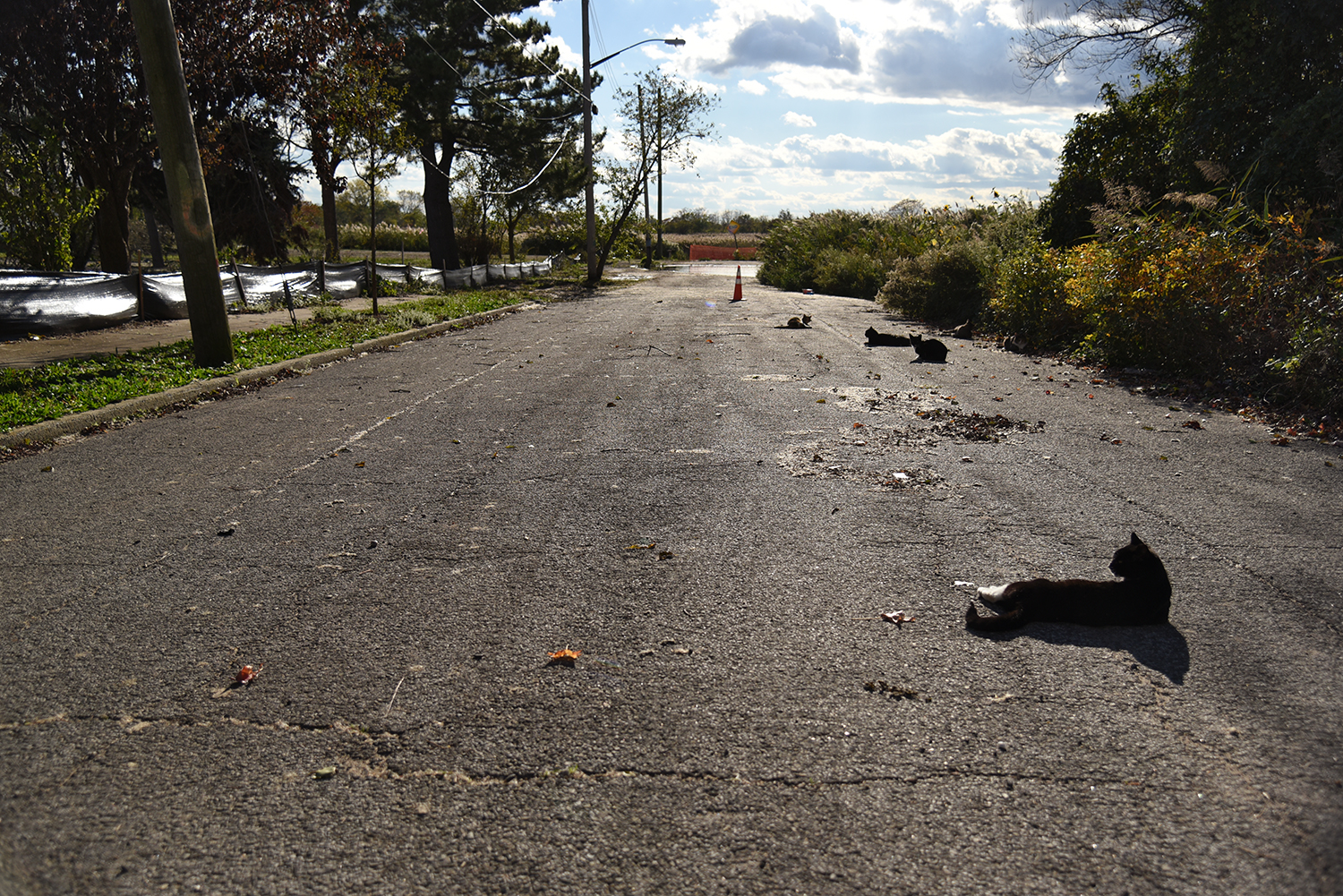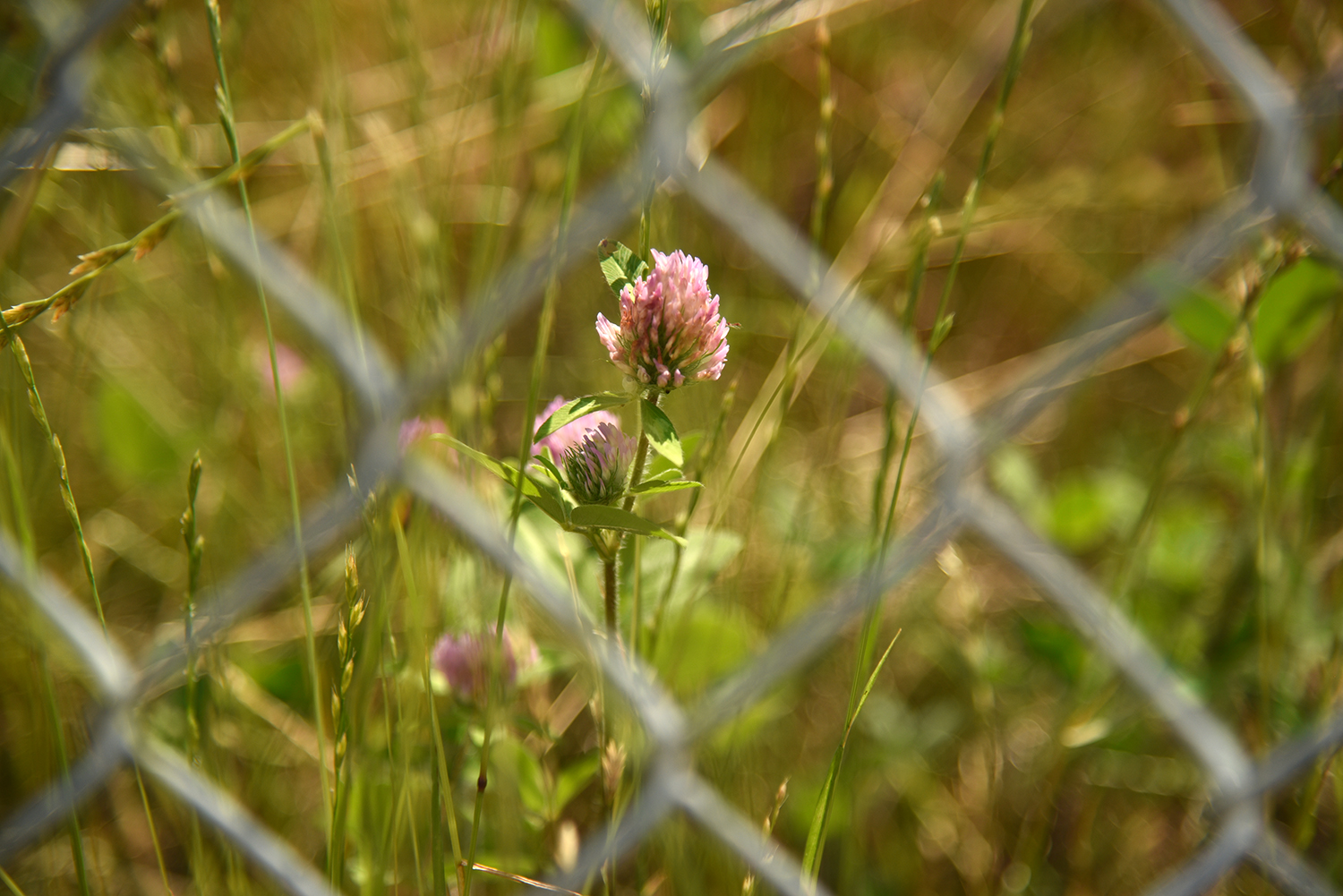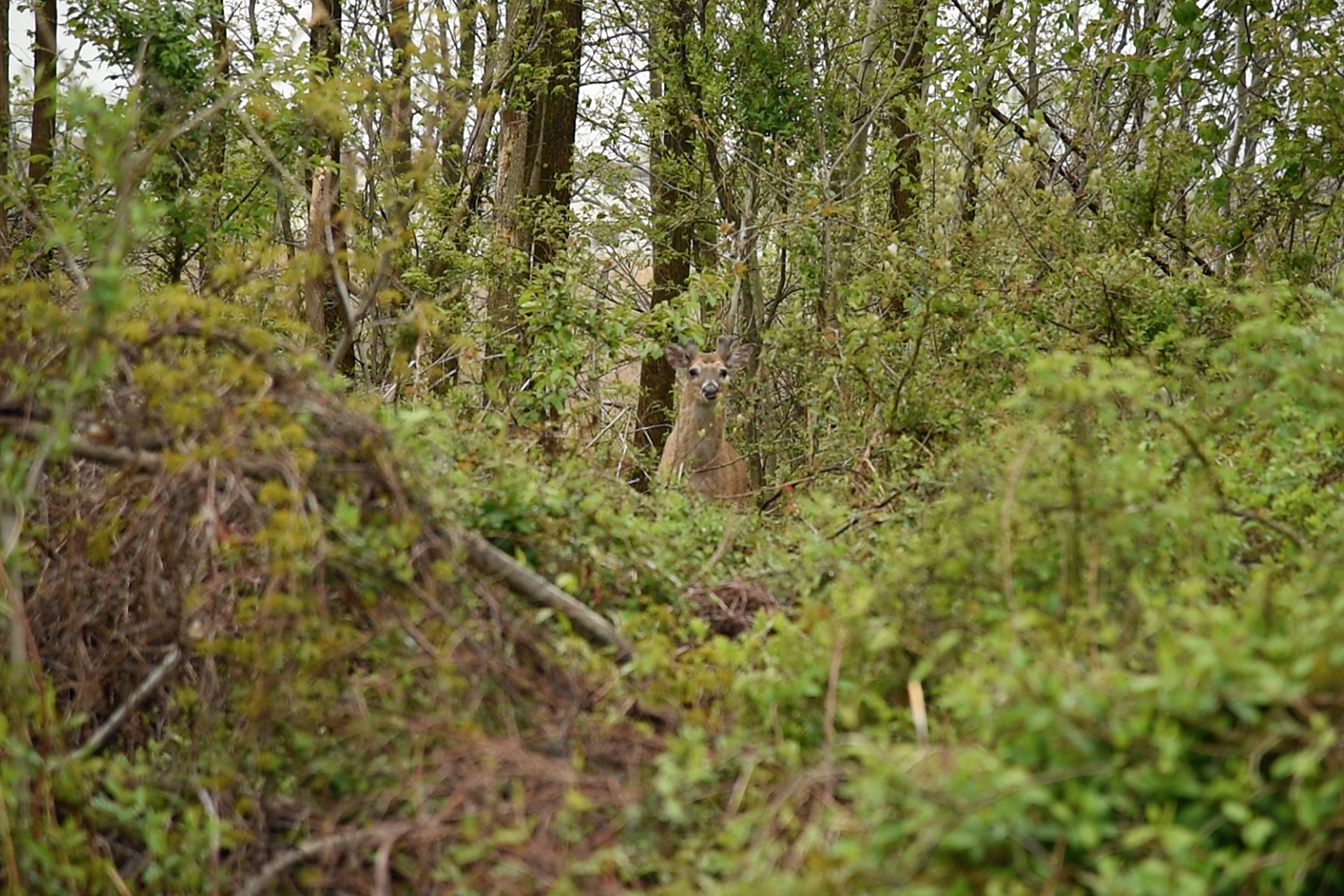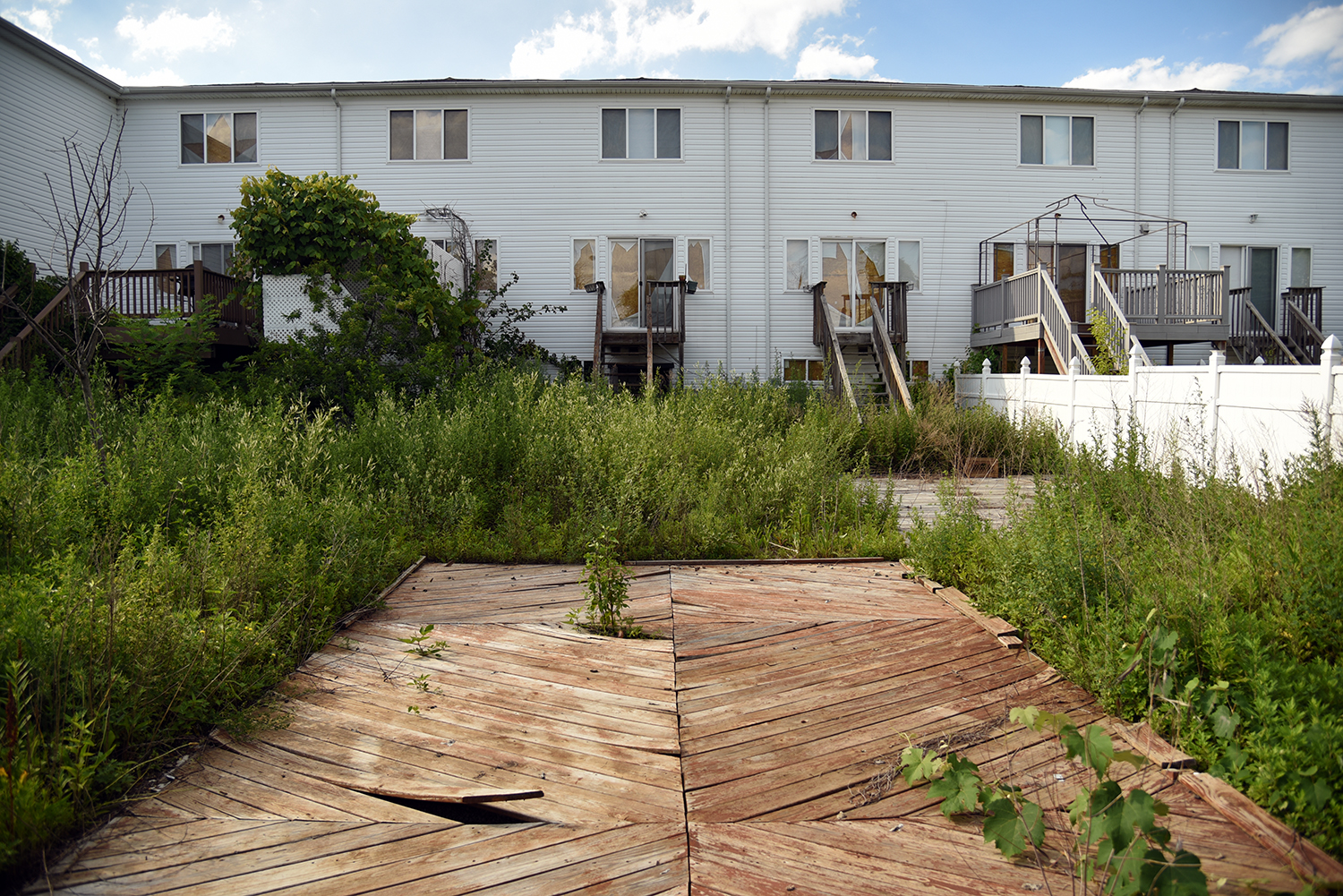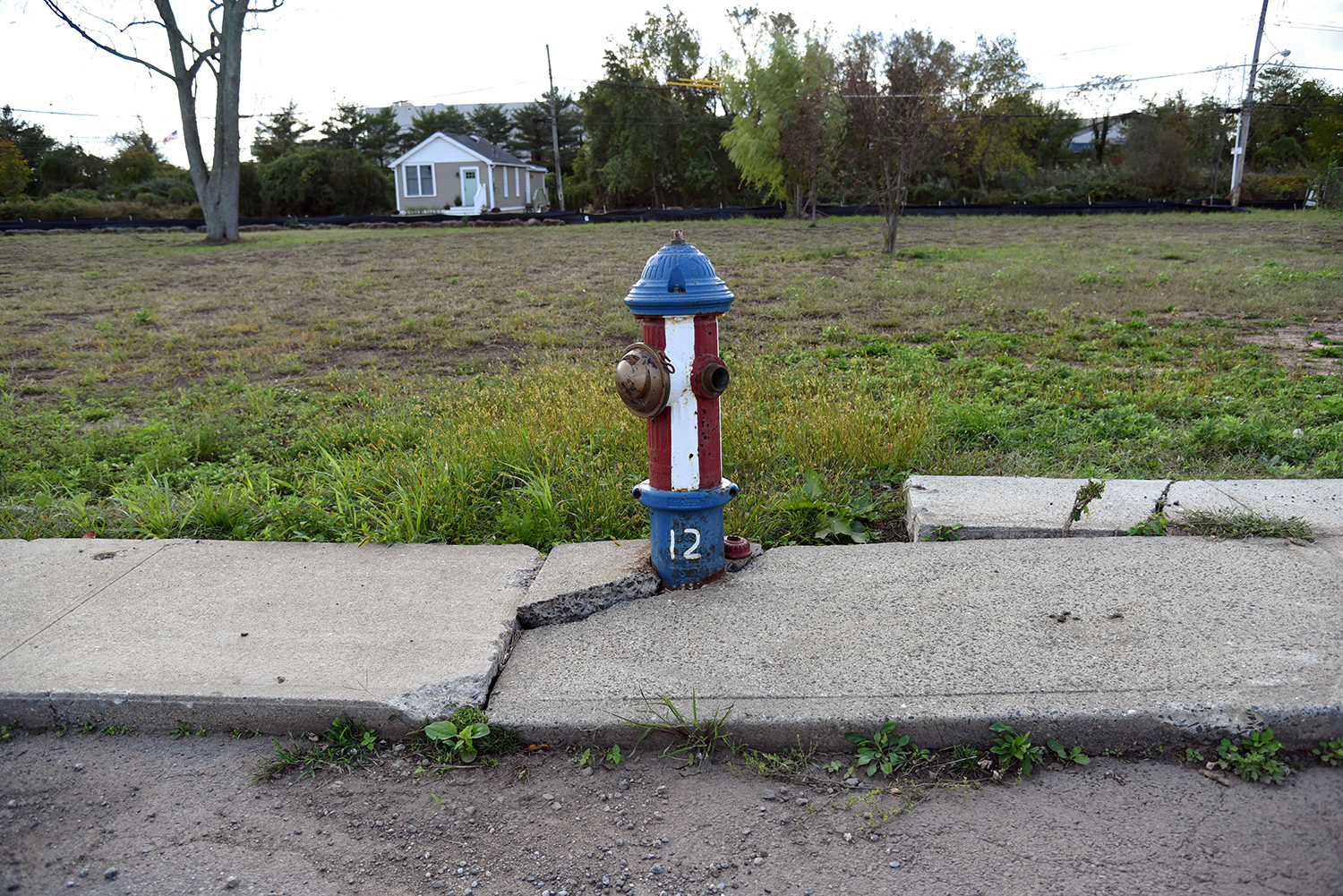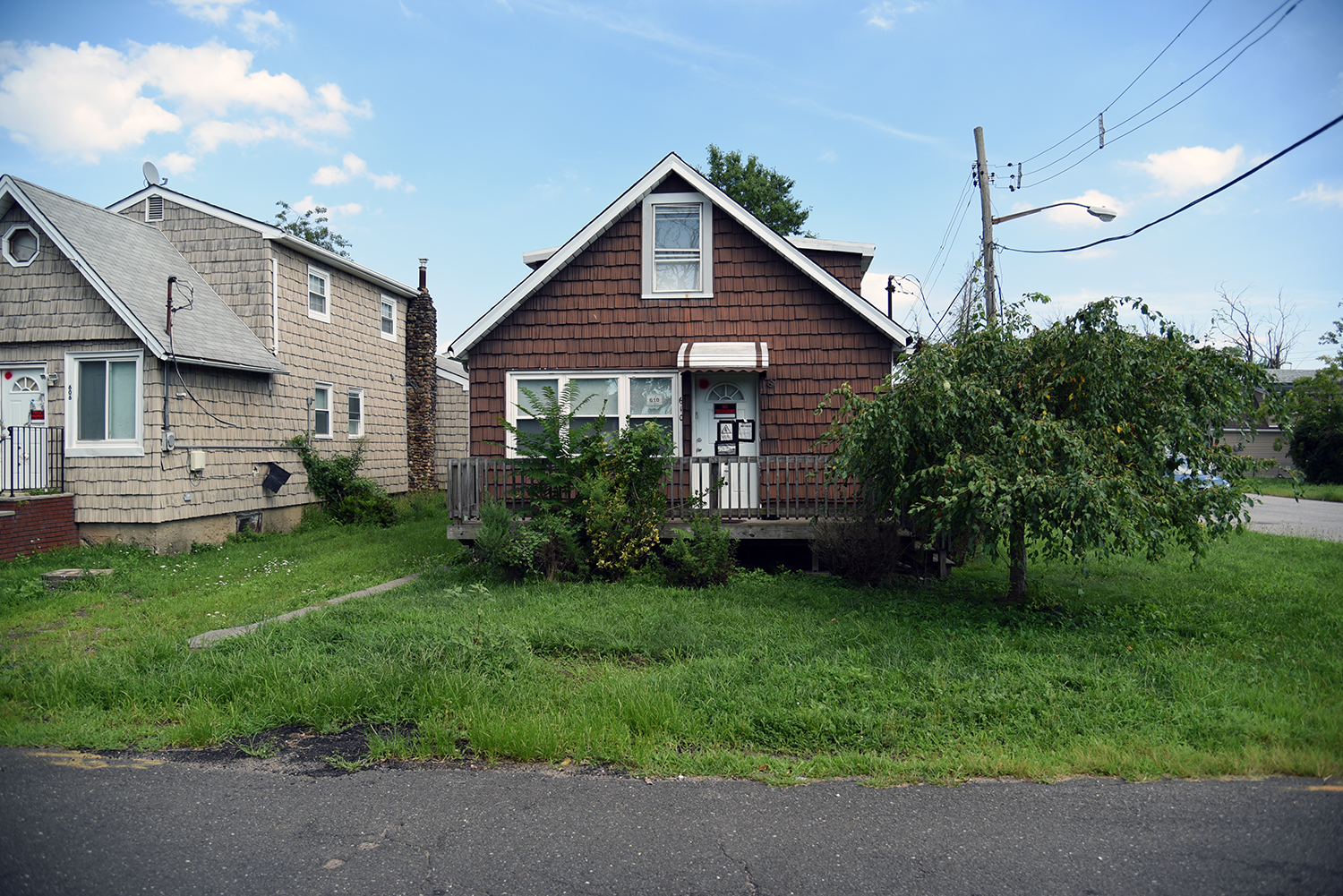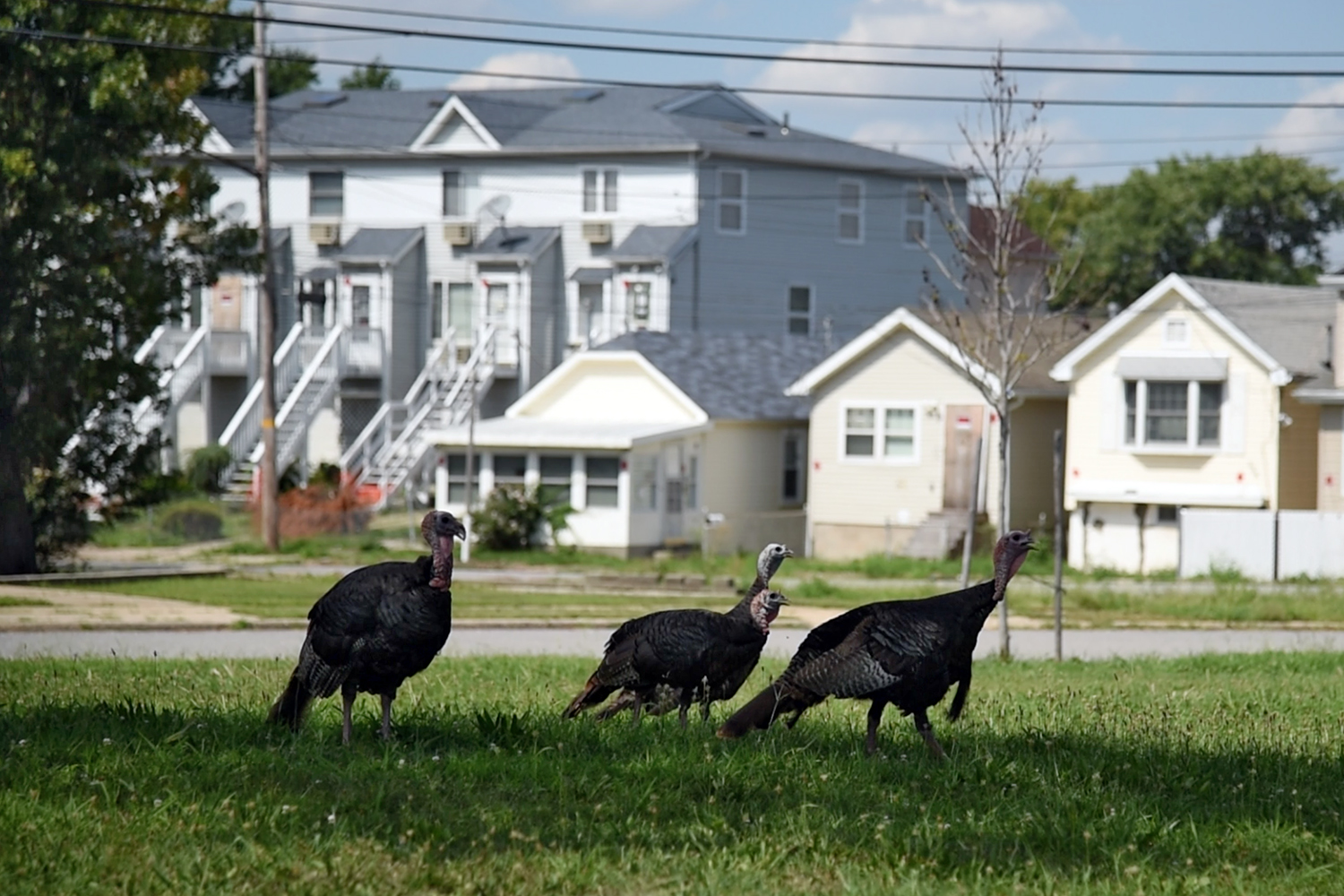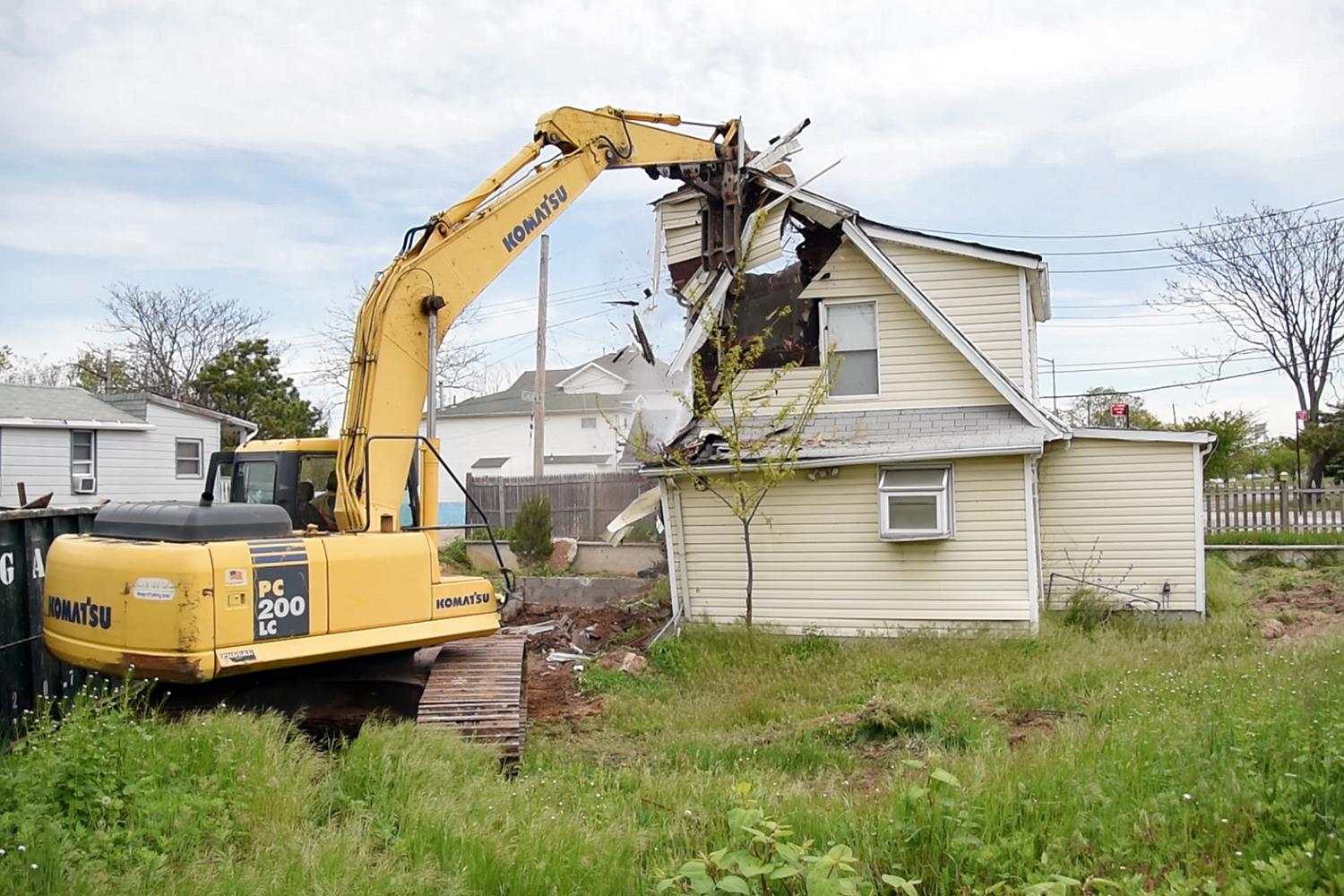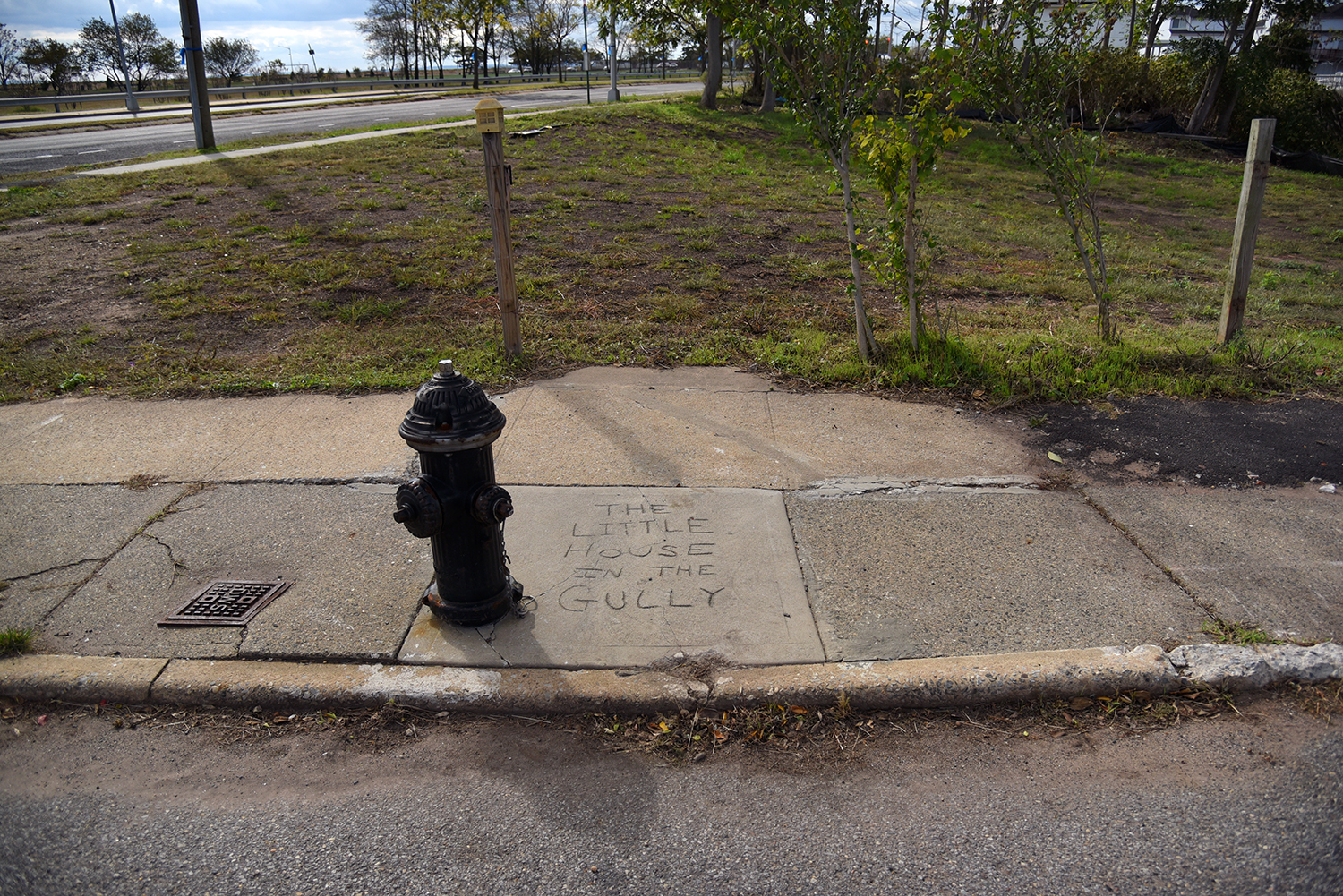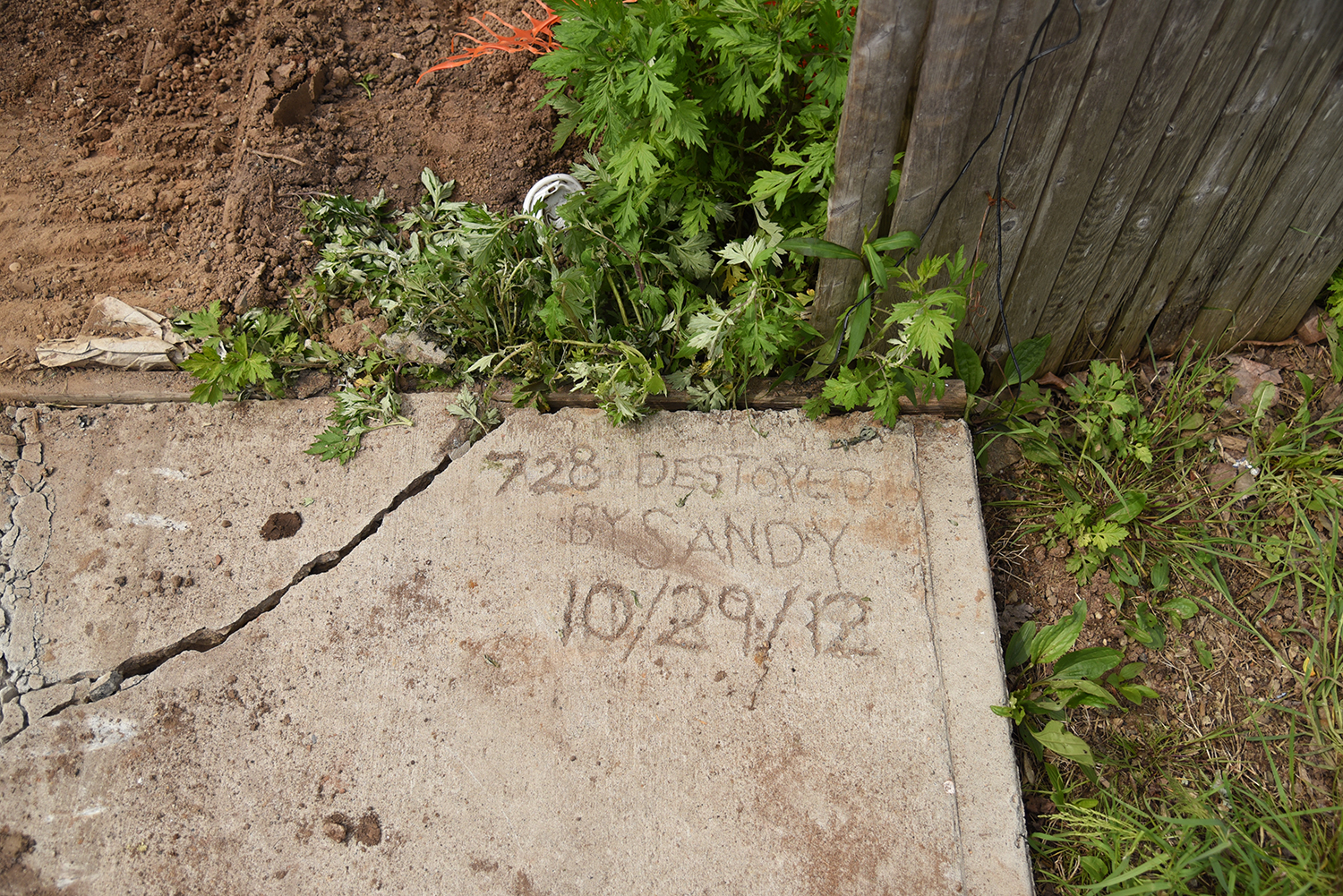
As the houses came down, the land opened up for the first time in over 100 years. Where human families once lived, fields of wildflowers now stretched out towards the ocean, and other animals began to build their homes. Geese hatched their eggs in empty lots, teaching their goslings to swim in potholes. Deer came out from the woods to feed in overgrown backyards. Feral cats sunned themselves for hours in the middle of empty roads. Possums strolled the crumbling sidewalks.
In the four years since Hurricane Sandy, no neighborhood in New York City has changed as radically as Oakwood Beach in Staten Island. Rows of houses and apartments once lined the streets of this quiet oceanfront neighborhood, but most of those buildings are now gone, either destroyed by the storm or torn down by the government as part of a "managed retreat" from the rising seas.
In total, the Governor’s Office of Storm Recovery (GOSR) has acquired 299 homes here at a cost of $122 million, and has now taken down 196 properties, leaving behind a haven for foraging mammals, birds, insects and plants, with no apex predators in sight.
Over the past year, as nature has made its dramatic return to Oakwood Beach, an unrelenting schedule of home demolitions has continued to reshape the waterfront. "So far we’ve done about 160 houses this year, here in Staten Island," says Joseph Giordano, the senior project engineer for NorthStar Demolition and Remediation. "There’s a lot of deer here, a lot of turkeys, geese. Even when we are doing the demolitions, the geese are hanging around. They are not afraid."
After each home demolition, a specially designed mix of wetlands seed is spread out over the empty land, and it is now beginning to take root, transforming empty lots into colorful meadows of shrubs and flowers, populated by bees and butterflies.
This same process will soon repeat itself in nearby Ocean Breeze and Graham Beach, the other two Staten Island neighborhoods that are part of the GOSR buyout program. "We are just preparing for the next round now," says Giordano. "The last few months it’s been seeding and cleaning up, getting ready for the demolitions."
Only 26 properties have come down in Ocean Breeze so far, and none have been demolished in Graham Beach, but during the coming year, these two neighborhoods will also be dismantled and returned to a more natural state. "If you take into consideration the seeding and everything else, it’s definitely a year long process," said Giordano. "We demo the property, backfill it, seed it, and turn it back over. We plant the seeds, that’s it."
What is most surprising about this process of strategic retreat is that more waterfront neighborhoods in New York City have not yet joined in. Many communities throughout the city are at risk of serious damage in future storms, and several already flood on a regular basis, including Hamilton Beach and Broad Channel Island.
"Managed retreat is the strategy that most effectively eliminates this risk by restoring land to its natural floodplain functions," says Catie Marshall, a spokesperson for the Governor’s Office of Storm Recovery. "This strategy becomes all the more important in the face of imminent sea level rise and the new reality of increasingly frequent storms."
Managed retreat becomes all the more important in the face of imminent sea level rise and increasingly frequent storms.
Instead of embracing this strategy, New York City has actually moved in the opposite direction, and is currently moving tens of thousands of new residents into waterfront areas that were underwater during Hurricane Sandy. These areas, which include the waterfronts of Williamsburg, Greenpoint, Long Island City, and Hallets Point, are all in flood zones with the highest probability of flooding, especially as major storms become more frequent.
"By 2050, if sea-level rise happens as rapidly as many scientists think it will, today’s hundred-year floods will become five times more likely, making mass destruction a once-a-generation occurrence," according to a recent article by Andrew Rice in New York. "Like a stumbling boxer, the city will try to keep its guard up, but the sea will only gain strength."
As global warming continues to raise sea levels around the planet, New York City’s coastline may be inundated even sooner than we think. Antarctica’s ice sheets are now melting more rapidly than researchers have ever seen, and scientists recently discovered that Greenland’s glaciers are disappearing 7.6 percent faster than previously thought, with 270 billion metric tons of ice melting each year.
"Just in the past four years, more than a trillion tons of ice have been lost," wrote Elizabeth Kolbert, in a recent article on Greenland in The New Yorker. "This is four hundred million Olympic swimming pools’ worth of water, or enough to fill a single pool the size of New York State to a depth of twenty-three feet."
As global warming continues to raise sea levels, New York City’s coastline may be inundated even sooner than we think.
Taken in this context, the rewilding of three small neighborhoods along Staten Island’s waterfront seems like just a drop in the bucket. But this new process of planned relocation may soon encompass much larger swaths of land as coastal areas become increasingly uninhabitable and humans are forced to relocate away from densely populated waterways.
Yet even the urban wildlife havens we are now creating are just a temporary landscape. As land and resources become scarcer for all species, what will happen to the animals that we have allowed to return to the water’s edge? Will they be submerged, or will they find another refuge?
As human-induced climate change continues to reshape the planet, a global extinction crisis is also now unfolding, one of the largest such events in the history of the earth. "Right now, in the amazing moment that to us counts as the present, we are deciding, without quite meaning to, which evolutionary pathways will remain open and which will forever be closed," writes Elizabeth Kolbert in her Pulitzer Prize-winning book The Sixth Extinction. "No other creature has managed this, and it will, unfortunately, be our most enduring legacy."
As we reshape New York City’s coastline yet again, we are also radically altering the lives of those who call it home.
In Oakwood Beach, empty roads once lined with homes have now been reclaimed by feral cats, geese, deer, and other species.
While coyotes and bears have greatly expanded their range in New York, they have not yet made it to Staten Island, leaving the streets open to possums and raccoons.
Throughout the year, a series of home demolitions have emptied out the land here, leaving behind open spaces replanted with wetlands seeds.
In areas that were torn down last year, the seeds have begun to take root. "The wetlands mix doesn’t take for a season or two, but we throw a lot of annual rye on there to give it a cover, so there’s no erosion," says Giordano.
"If it’s next to a residence, they usually mow it down and keep it short. But once everybody’s out of here, and you see properties where there are no vacancies around, we will just let it grow back up," says Giordano.
Over the past year, these fields of wildflowers, grasses, and shrubs have become populated by a wide variety of bees, butterflies, and other insects, which would not normally find a home in the fields of invasive phragmites that otherwise cover Staten Island’s coast.
"You can tell the difference between that and the phragmites. But you will see phragmites in there, because you’re not going to get rid of them," says Giordano. "They always take over."
The open land has also been a boon to Staten Island’s deer population, which has grown so large in recent years that the city is now performing vasectomies to keep the herds in check.
Behind empty homes, abandoned backyards have also been left to grow wild, with grape arbors, gardens, and vegetable patches thriving, unpicked.
Along the wide open fields where the homes of Oakwood Beach once stood, a few human holdouts who have declined to participate in the state buyout. The program is voluntary, for now.
In nearby Ocean Breeze, the long process of retreat has also been unfolding slowly in the years since Hurricane Sandy decimated the neighborhood. Empty and overgrown homes here await demolition.
Wild turkeys have thrived in this quiet isolation, raising their families in open spaces around the empty homes, walking through backyards and feeding in empty lots.
A roundup of 100 turkeys earlier this year by the federal government does not appear to have affected the population in Ocean Breeze, which remains quite large.
After several years of buyouts and relocations, the pace of home demolitions in Ocean Breeze will soon speed up. This home was emptied out in 2014, and sat vacant until being demolished in May of this year.
Today, the former home site is an open field, waiting for the wetlands mix to take root. The Governor’s Office of Storm Recovery has offered to buy 107 properties in Ocean Breeze, for a total of $36.6 million. In nearby Graham Beach, they have made 122 offers, totaling $49.4 million.
After these neighborhoods are torn down, few reminders will remain of the painful process that Hurricane Sandy initiated. In the years to come, even these artifacts may disappear into the wetlands.
Nathan Kensinger is a photographer, filmmaker, and curator who has been documenting New York City's abandoned edges, endangered neighborhoods, and post-industrial waterfront for more than a decade. His Camera Obscura photo essays have appeared on Curbed since 2012. "Industrial Twilight," an exhibit of Kensinger’s photographs of Brooklyn’s changing waterfront, is currently being exhibited at the Atlantic Avenue subway station in Brooklyn. "Chance Ecologies: Queens," an exhibit co-curated by Kensinger, is currently being exhibited at the Queens Museum.
from
http://ny.curbed.com/2016/10/27/13431288/hurricane-sandy-staten-island-wetlands-climate-change













